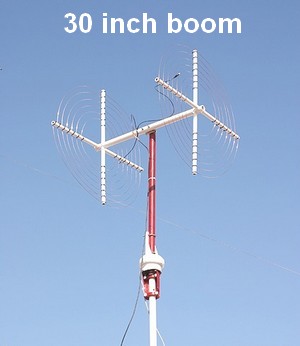Here I am putting some modeling stuff that is unrelated to other threads. Bob85 a note, I will likely add your Starduster model request here.
To start I am going to show test model results for angled radials. This is on a Starduster type antenna, although these have four radials instead of three because it is easier.

The goal was to see if my new(er) method for AGT (Average Gain Test) adjustment, namely using a single segment feed point and adjusting its diameter, would be as effective at correcting this type of model as using the more traditional method of adding a few segments to remove said acute angles. It worked, their are only very minor differences between these models. The similarities go well beyond what this plot shows, every aspect of both antennas are extremely close, from variables used for things like antenna length, to SWR, to efficiency, ect. This tells me that with this antenna design traditional wisdom is but one way to overcome a known problem with this software.
This isn't the end all and be all of this test, however. I will also run a similar test at some point with upward angled radials, like on the vector antenna.
Assuming that works out as well, I will have no problem using my method instead of traditional wisdom when it comes to angles of less than 90 degrees.
The DB
To start I am going to show test model results for angled radials. This is on a Starduster type antenna, although these have four radials instead of three because it is easier.

The goal was to see if my new(er) method for AGT (Average Gain Test) adjustment, namely using a single segment feed point and adjusting its diameter, would be as effective at correcting this type of model as using the more traditional method of adding a few segments to remove said acute angles. It worked, their are only very minor differences between these models. The similarities go well beyond what this plot shows, every aspect of both antennas are extremely close, from variables used for things like antenna length, to SWR, to efficiency, ect. This tells me that with this antenna design traditional wisdom is but one way to overcome a known problem with this software.
This isn't the end all and be all of this test, however. I will also run a similar test at some point with upward angled radials, like on the vector antenna.
Assuming that works out as well, I will have no problem using my method instead of traditional wisdom when it comes to angles of less than 90 degrees.
The DB






